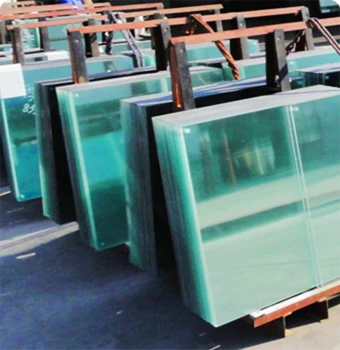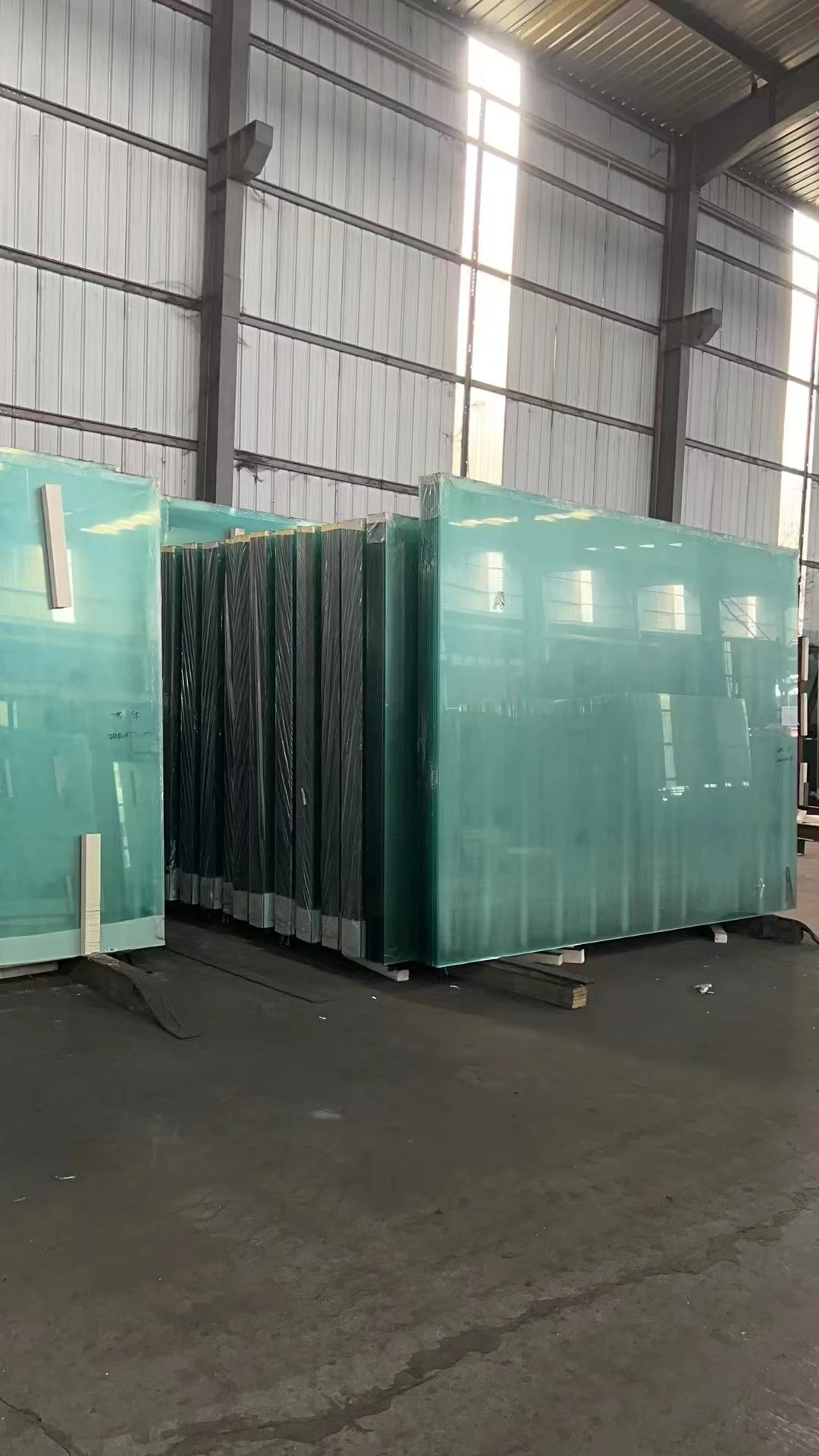In the dynamic and evolving world of interior and architectural design, tempered glass stands out as a quintessential material, known for its durability, safety, and aesthetic appeal. Distinguished from regular glass by the unique thermal and chemical processes it undergoes, tempered glass offers a spectrum of options to cater to various needs and preferences. This article delves into the different types of tempered glass available in the market, each tailored to specific applications while maintaining the core attributes of strength and safety.

Firstly,
clear tempered glass is the most commonly used variant. Its transparency and strength make it ideal for applications requiring uninterrupted sightlines, like office partitions, shower doors, and storefront windows. While it shares a similar appearance with standard glass, its tempered nature drastically reduces the risk of injury during breakage, as it shatters into small, blunt pieces.
For environments where privacy and light management are crucial, frosted tempered glass becomes the preferred choice. Created by acid etching or sandblasting one or both glass surfaces, this glass diffuses light while maintaining a sleek, modern look. Often employed in bathrooms, conference rooms, and other private spaces, frosted glass balances openness with privacy.

Another variant gaining popularity is tinted tempered glass, known for its heat absorption and aesthetic properties. By adding color additives during manufacturing, this glass reduces the sunlight and heat entering the building, thus contributing to energy savings. Architects and designers often use tinted glass to enhance a building's façade, while also meeting specific climate conditions and energy efficiency criteria.
Reflective tempered glass, a step further in sophistication, has a thin metallic coating that allows it to reflect heat and light. This property makes it exceptionally useful in climates where solar control is essential to reduce cooling costs. Commonly seen in skyscrapers and modern commercial buildings, reflective glass not only improves energy efficiency but also adds a contemporary sheen to the structure.
Low-E tempered glass is another specialized type, designed with a microscopically thin coating that reflects interior temperatures back inside. As a result, it enhances thermal insulation, making it highly beneficial in both residential and commercial settings located in extreme weather conditions. By reducing the exchange of heat through glass windows, this variant plays a crucial role in maintaining indoor comfort and lowering heating or cooling expenses.
different types of tempered glass
Manufacturers have also introduced laminated tempered glass to boost security and sound insulation. By sandwiching a layer of polyvinyl butyral (PVB) between two pieces of tempered glass, this type provides superior impact resistance and noise reduction. It's widely used in settings that demand high security and reduced noise levels, such as banks, airports, and highways adjacent buildings.
Moreover, self-cleaning tempered glass introduces convenience to building maintenance by utilizing a special coating that breaks down dirt and grime upon contact with sunlight. The hydrophilic nature of the coating causes rainwater to spread evenly over the glass, washing away loosened dirt. This glass innovation is ideal for hard-to-reach areas, ensuring buildings retain a clean, clear appearance with minimal maintenance effort.
In the realm of artistic design, patterned tempered glass emerges as a versatile option. With a variety of designs imprinted onto its surface during production, it serves both functional and decorative purposes. This type is often used in both commercial and residential spaces to create partitions, doors, or table tops that reflect unique style and personality.
Lastly, ultra-clear tempered glass, also known as low-iron glass, offers enhanced clarity by reducing the iron content found in typical glass. This makes it perfect for applications where color distortion can affect the visual quality, such as in display cases, aquariums, and certain architectural features.
Understanding the different types of tempered glass and their distinctive properties enables better decision-making for construction, renovation, and design projects. Not only do they ensure structural integrity and safety, but they also contribute significantly to aesthetic appeal and environmental efficiency. As technology advances, the versatility and functionality of tempered glass continue to expand, opening new possibilities in its applications.
 Afrikaans
Afrikaans  Albanian
Albanian  Amharic
Amharic  Arabic
Arabic  Armenian
Armenian  Azerbaijani
Azerbaijani  Basque
Basque  Belarusian
Belarusian  Bengali
Bengali  Bosnian
Bosnian  Bulgarian
Bulgarian  Catalan
Catalan  Cebuano
Cebuano  Corsican
Corsican  Croatian
Croatian  Czech
Czech  Danish
Danish  Dutch
Dutch  English
English  Esperanto
Esperanto  Estonian
Estonian  Finnish
Finnish  French
French  Frisian
Frisian  Galician
Galician  Georgian
Georgian  German
German  Greek
Greek  Gujarati
Gujarati  Haitian Creole
Haitian Creole  hausa
hausa  hawaiian
hawaiian  Hebrew
Hebrew  Hindi
Hindi  Miao
Miao  Hungarian
Hungarian  Icelandic
Icelandic  igbo
igbo  Indonesian
Indonesian  irish
irish  Italian
Italian  Japanese
Japanese  Javanese
Javanese  Kannada
Kannada  kazakh
kazakh  Khmer
Khmer  Rwandese
Rwandese  Korean
Korean  Kurdish
Kurdish  Kyrgyz
Kyrgyz  Lao
Lao  Latin
Latin  Latvian
Latvian  Lithuanian
Lithuanian  Luxembourgish
Luxembourgish  Macedonian
Macedonian  Malgashi
Malgashi  Malay
Malay  Malayalam
Malayalam  Maltese
Maltese  Maori
Maori  Marathi
Marathi  Mongolian
Mongolian  Myanmar
Myanmar  Nepali
Nepali  Norwegian
Norwegian  Norwegian
Norwegian  Occitan
Occitan  Pashto
Pashto  Persian
Persian  Polish
Polish  Portuguese
Portuguese  Punjabi
Punjabi  Romanian
Romanian  Russian
Russian  Samoan
Samoan  Scottish Gaelic
Scottish Gaelic  Serbian
Serbian  Sesotho
Sesotho  Shona
Shona  Sindhi
Sindhi  Sinhala
Sinhala  Slovak
Slovak  Slovenian
Slovenian  Somali
Somali  Spanish
Spanish  Sundanese
Sundanese  Swahili
Swahili  Swedish
Swedish  Tagalog
Tagalog  Tajik
Tajik  Tamil
Tamil  Tatar
Tatar  Telugu
Telugu  Thai
Thai  Turkish
Turkish  Turkmen
Turkmen  Ukrainian
Ukrainian  Urdu
Urdu  Uighur
Uighur  Uzbek
Uzbek  Vietnamese
Vietnamese  Welsh
Welsh  Bantu
Bantu  Yiddish
Yiddish  Yoruba
Yoruba  Zulu
Zulu 


